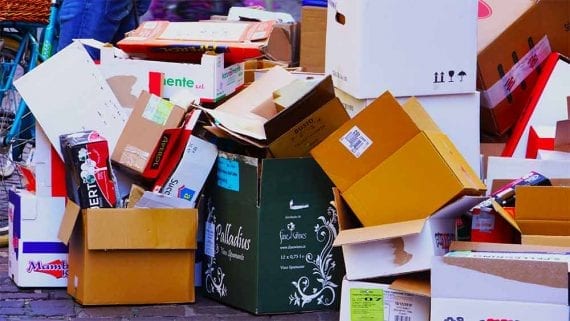Booming retail sales in November and December can lead to tons of returns and exchanges in January. Some of those returned items can be hazardous and require special handling and disposal.
The return of hazardous materials poses several problems for retailers, including identification, reverse logistics, and disposal. Moreover, hazardous materials threaten people and the environment and are subject to significant fines from regulatory agencies, depending on how the materials are managed.
Ross Stores, Inc.
For example, in December 2020, Ross Stores, Inc. agreed to pay several California counties a total of $3.3 million for improperly handling and disposing hazardous materials at many of its Ross Dress for Less and DD’s Discount stores over a seven-year period.
“It is vital that any company doing business in California abide by our environmental protection laws. My office remains dedicated to prosecuting violations of these laws in our ongoing effort to safeguard our natural resources from irreparable harm due to improper disposal of hazardous waste,” said Alameda County, Calif. District Attorney Nancy O’Malley in an official statement.
Ross is not alone. Earlier in 2020, retailer Bed Bath & Beyond paid $1.4 million in a similar settlement after hazardous materials (batteries and electronics) the chain sent to a California landfill caught fire back in 2015.
In all, retailers reportedly paid more than $8 million in hazardous material fines in California alone in the last several months of 2020.
A significant part of the problem for Ross, Bed, Bath & Beyond, and other retailers is product returns.

Managing hazardous material returns can be a serious challenge for retailers.
HazMat Identification
The first challenge with retail returns is identifying hazardous materials.
“I’ll give you a great example,” said Ken Bays, vice president of product management of supply tech at Inmar Intelligence, a returns service provider. “In my office, I have a tub of baby lotion. It is like a salve that you put on a baby’s diaper rash. In California, it is considered hazardous. It’s ok to rub it on your baby’s bottom, but don’t put it in a landfill.”
While a product like diaper-rash ointment might be safe for external use on a person, it could be deadly when it contaminates water.
Similarly, some of the products Ross disposed of and was fined for included cosmetics and perfumes.
So, how can a customer service agent who is processing a return request know that a particular ointment or perfume is dangerous?
Reverse Logistics
Reverse shipping logistics is the process of a package traveling from its original destination back to a warehouse.
The U.S. Department of Transportation has issued rules and regulations (PDF) for hazardous-materials reverse logistics. These requirements include understanding:
- If a product is hazardous,
- If it has packaging requirements,
- If it can be used for its original purpose,
- How much hazardous material is involved,
- Where the product is located.
Merchants should understand similar requirements on a local, regional, and state level.
Some businesses address the problem by telling consumers to keep a product that could create a hazardous material concern.
According to Bays, this is a viable option to address the costs and risks associated with returns classified as hazardous. But it does not always address the underlying human or environmental risks.
Asking a customer to keep a small of cosmetics may be acceptable. But as Bays points out, hazardous material regulations exist to protect people and the environment. The aim is to be a good corporate citizen.
Disposal
Disposal is perhaps the most challenging problem with hazardous material returns. Simply tossing something in the trash could result in a violation similar to Ross and Bed, Bath & Beyond.
Thus, all retailers should formalize and adhere to standard operating procedures for potentially hazardous materials. As Bays put it, we all want to protect our companies, customers, and communities.




